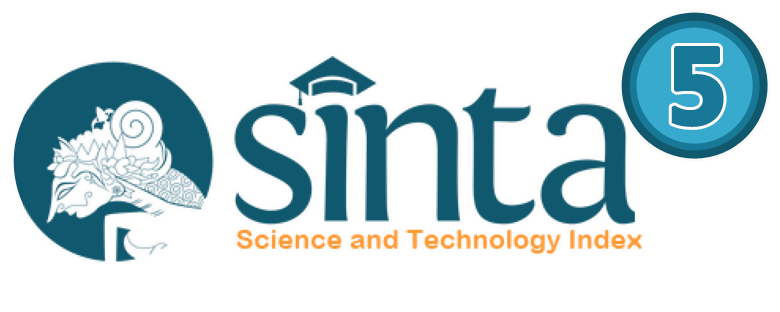MEMBANGUN KESADARAN TUNAGRAHITA DI MASYARAKAT: PENTINGNYA PENDIDIKAN INKLUSI
DOI:
https://doi.org/10.33557/jedukasi.v16i2.2857Keywords:
Mental retardation, children with special needs, mental retardationAbstract
Children with special needs are children who are born with special needs that are different from humans in general, so they need special services. Someone who has an intellectual disability is certain that he is mentally retarded. Children with mental retardation have a tendency to care less about their environment, both in the family and in the surrounding environment. Society generally recognizes mental retardation as mentally retarded or mentally retarded or an idiot. According to WHO, mentally retarded children are children who have two essential components, namely intellectual functioning which is significantly below average because of their inability to adapt to the norms that exist in society and is accompanied by an inability to adapt behavior that arises during development. For this reason, it is important for us to be able to appreciate and consider their existence more.
References
Aprianus Simanungkalit. (2020). Pelayanan Kristen bagi Penyandang Tunagrahita. Jurnal Teologi Kependetaan, 11(1), 16–27. https://stapin.ac.id/e-journal/index.php/pneumatikos/article/download/21/21.
Mariani, E., & Sulasmono, B. S. (2018). Evaluasi Pelaksanaan Program Pendidikan Inklusi di SMP Negeri. Kelola: Jurnal Manajemen Pendidikan, 5(2), 205–216. https://doi.org/10.24246/j.jk.2018.v5.i2.p205-216.
Murniarti, E., & Anastasia, N. Z. (2016). Pendidikan Inklusif di Tingkat Sekolah Dasar: Konsep, Implementasi, dan Strategi. Jurnal Dinamika Pendidikan, 9(1), 9–18. http://ejournal.uki.ac.id/index.php/jdp/article/view/inclusive education%3B the concept of inclusive education%3B the implementation of inclusive education%3B inclusive education strategy.
Ramawati, D., Allenidekania, A., & Besral, B. (2012). Kemampuan Perawatan Diri Anak Tuna Grahita Berdasarkan Faktor Eksternal dan Internal Anak. Jurnal Keperawatan Indonesia, 15(2), 89–96. https://doi.org/10.7454/jki.v15i2.32.
Sari, S. F. M., Binahayati, B., & Taftazani, B. M. (2017). Pendidikan Bagi Anak Tuna Grahita (Studi Kasus Tunagrahita Sedang Di Slb N Purwakarta). Prosiding Penelitian Dan Pengabdian Kepada Masyarakat, 4(2), 217–222. https://doi.org/10.24198/jppm.v4i2.14273.
Setiawan, H., Oktaviyanti, I., Jiwandono, I. S., Affandi, L. H., Ermiana, I., & Khair, B. N. (2020). Analisis Kendala Guru Di SDN Gunung Gatep Kab. Lombok Tengah dalam Implementasi Pendidikan Inklusif. Didaktis: Jurnal Pendidikan dan Ilmu Pengetahuan, 20(2), 169–183. https://doi.org/10.30651/didaktis.v20i2.4704.
Sukinah. (2013). Sistem Penilaian Hasil Belajar Anak Berkebutuhan Khusus dalam Implementasi Pendidikan Setting Inklusi. Universitas Negeri Yogyakarta, 1(2), 1–17.
Widiastuti, N. L. G. K., & Winaya, I. M. A. (2019). Prinsip Khusus dan Jenis Layanan Pendidikan bagi Anak Tunagrahita. Jurnal Santiaji Pendidikan (JSP), 9(2), 116–126. https://doi.org/10.36733/jsp.v9i2.392.
Yosiani, N. (2014). Relasi Karakteristik Anak Tunagrahita dengan Pola Tata Ruang Belajar di Sekolah Luar Biasa. E-Journal Graduate Unpar, 1(2), 111–123. http://journal.unpar.ac.id/index.php/unpargraduate/article/view/1207.
Zubaidah, & Utomo, P. (2021). Pola Pembelajaran dalam Layanan Bimbingan dan Konseling terhadap Siswa Berkebutuhan Khusus (Tunagrahita) di Sekolah Luar Biasa. JAMBURA Guidance and Counseling Journal, 2(2), 62–73. https://doi.org/10.37411/jgcj.v2i2.950.
Downloads
Published
Issue
Section
License

Jurnal Ilmiah Bina Edukasi oleh http://journal.binadarma.ac.id/index.php/jurnalbinaedukasi disebarluaskan di bawah Lisensi Creative Commons Atribusi 4.0 Internasional.











